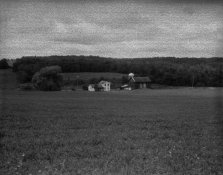In that case, if you are getting the results you want, stick with it. As others have said, the anti-halation layer has done it's job at the time of the exposure so whether it comes out in a pre-wash or during development is of no importance as far as that goes.
Have fun, Bob.
The whole reason behind my asking this is my determination to get a good negative with Rodinal stand development. Everyone else seems to be able to do it without problems. So I'm trying to eliminate and find the source of
my problems. It could even be my scanner as I have not yet printed the negatives yet. I read a post (below is a link) about developing for scanning after I started the post about the anti-halation...I'm seeing a lot of this type of banding and thought it might be from the pre-soak. Now I know it isn't so I need to narrow it down. When I scan the negatives they look grainy with that banding. So maybe its a) the scanner, b) the water bath -incorrect agitation, c) developer agitation, d) me! doh!

I used to get heavy purple stain until I did the longer presoak which I now don't need to worry about and this is going in freaking circles! The banding goes away depending on what dpi I scan at. It's an Epson 1200 Perfection - yeah - old, but it's paid for. hmmmmm....... so...
(there was a url link here which no longer exists)
Donald Qualls states ... "...This depends very much on the scanner, but most if not all will eventually reach a point where you see
excessive grain and even banding in the scan, even though the negatives in question still print well...."
I hope these aren't too big, but they show the difference.
Thanks for your patience!
Dorothy















